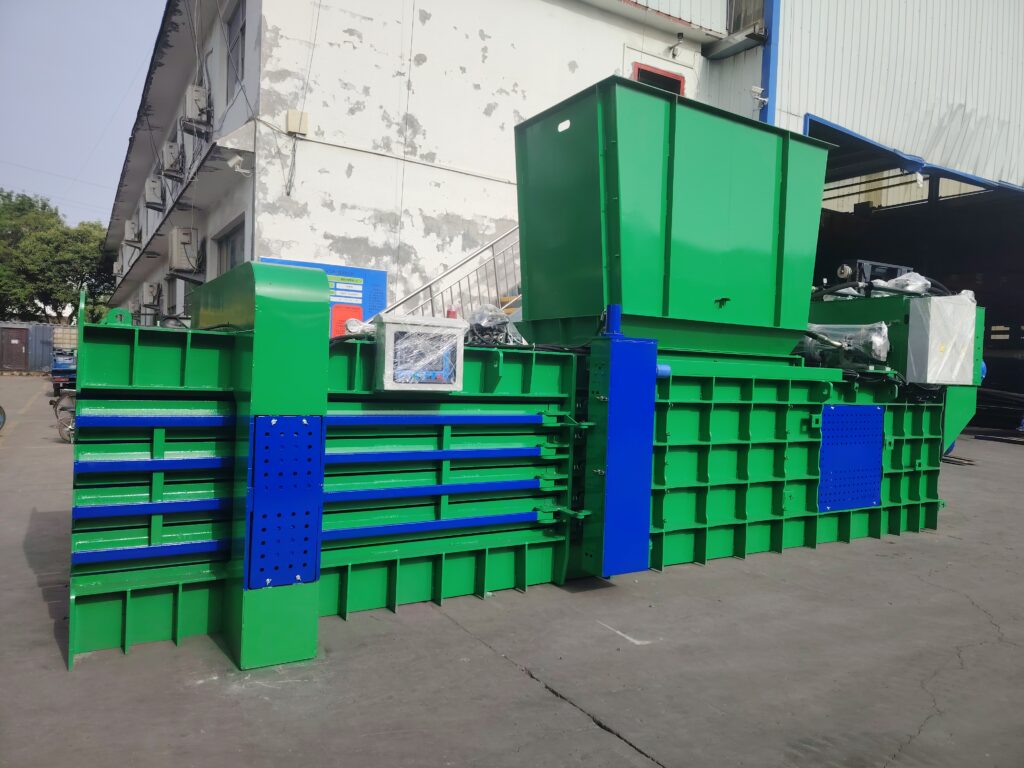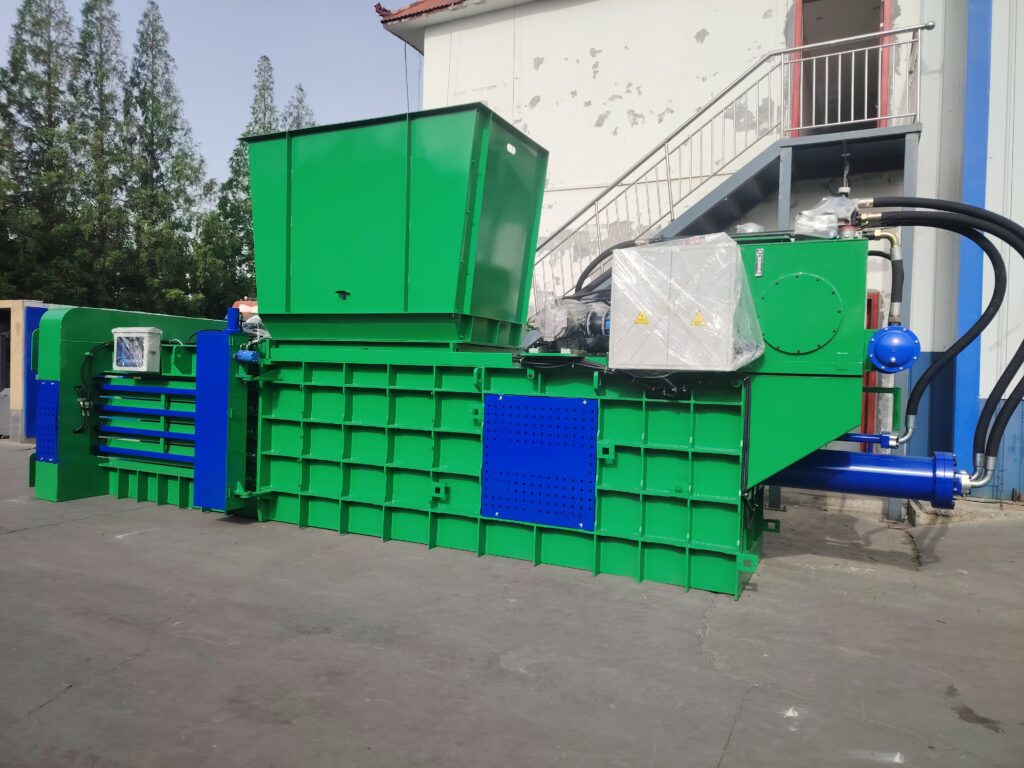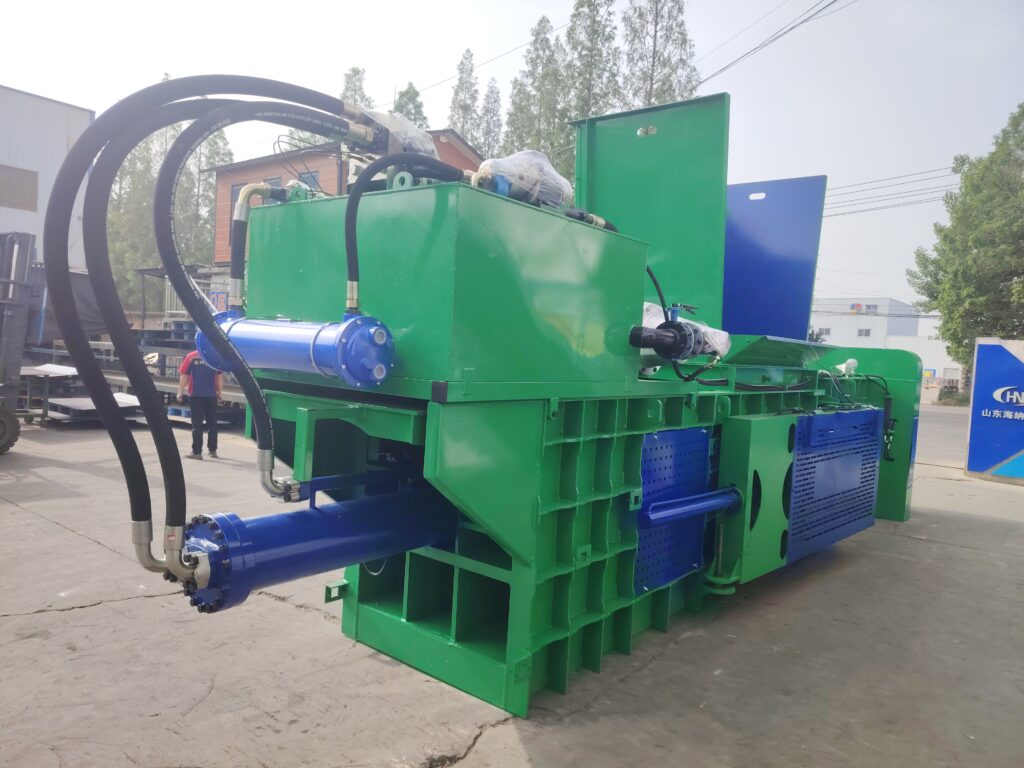What is a horizontal waste paper baler?

A horizontal waste paper baler is a powerful and efficient machine used for compressing and compacting large volumes of waste paper into dense, manageable bales for easier handling, storage, and transportation. Unlike vertical balers, which are loaded from the top and are more suitable for smaller volumes, horizontal balers are designed to process higher quantities of material and operate in environments where continuous or automated baling is needed. These machines are commonly used in recycling centers, manufacturing facilities, printing companies, and warehouses where significant amounts of cardboard, newspaper, office paper, and packaging waste are generated. The defining feature of a horizontal baler is its horizontal feed system, which allows for continuous feeding through a conveyor belt or hopper, making it more efficient for operations that require constant processing. The machine uses a hydraulic system to compress the paper into rectangular bales, which are then tied with wire or strapping material to maintain their shape. Horizontal balers come in different configurations, such as closed-end, open-end, and fully automatic, depending on the level of automation and throughput required. Fully automatic horizontal balers can significantly reduce labor costs by automating the entire baling cycle, from feeding to tying to bale ejection. This type of baler also offers advantages in safety, productivity, and space optimization. For companies focused on sustainability and efficient waste management, investing in a horizontal paper baler can lead to cost savings through reduced waste volume, lower hauling expenses, and potential revenue from selling recycled materials. Additionally, compacted bales take up far less space than loose paper waste, contributing to a cleaner, more organized facility. As environmental regulations and recycling demands continue to rise, horizontal waste paper balers are becoming essential equipment in industrial recycling and waste reduction strategies. Whether used in high-volume retail distribution centers or in paper-heavy production sites, these machines are critical for turning bulky, unmanageable paper waste into neat, stackable bales that can be easily stored, transported, or sold to recycling companies.
Why use a horizontal waste paper baler?

Using a horizontal waste paper baler offers numerous benefits that make it an essential investment for businesses and facilities generating large volumes of paper waste. One of the main reasons to use a horizontal baler is its ability to significantly improve operational efficiency by automating the baling process and reducing the need for manual labor. With continuous feeding capabilities and automatic tying systems, horizontal balers can handle large amounts of material quickly and consistently, making them ideal for high-volume environments such as recycling centers, warehouses, printing facilities, and logistics hubs. These machines reduce the space required to store loose paper waste by compressing it into dense, compact bales, which not only makes storage more organized but also reduces transportation costs due to the higher payload efficiency. This means companies can ship more material in fewer trips, cutting down on fuel costs and carbon emissions. Additionally, using a horizontal baler can contribute to a cleaner and safer workplace by minimizing loose waste, which reduces fire hazards and improves overall site hygiene. From an environmental perspective, implementing a baler supports recycling initiatives and helps businesses meet sustainability goals by ensuring waste paper is properly processed and diverted from landfills. Financially, companies can benefit from lower waste disposal fees and even generate revenue by selling high-quality baled paper to recycling firms. The durability and long lifespan of horizontal balers further justify their cost, providing long-term value and return on investment. Moreover, modern horizontal balers often come equipped with safety features, monitoring systems, and energy-efficient components that enhance usability and reduce operating costs. For companies seeking compliance with environmental regulations or aiming to enhance their corporate social responsibility image, a horizontal waste paper baler is a practical and impactful solution. Overall, the combination of economic, environmental, and operational advantages makes the use of horizontal balers a smart and forward-thinking choice for any organization dealing with substantial paper waste.
How to use a horizontal waste paper baler?

Using a horizontal waste paper baler involves a series of straightforward yet critical steps to ensure efficient operation, safety, and optimal bale quality. First, the machine must be properly installed on a level surface and connected to a suitable power source, typically three-phase electricity, with all safety checks and training completed before use. Once the baler is powered on, the operator begins by loading waste paper into the feed area, which can be a hopper or conveyor belt, depending on the machine’s configuration. In facilities with continuous waste flow, a conveyor system is often used to feed material automatically. The paper moves into the compaction chamber where a powerful hydraulic ram compresses it into a dense, uniform bale. Depending on the machine model, this process can be fully automated or semi-automatic, with options to control compaction cycles through a control panel or preset programs. Once the bale reaches the desired size, the baler automatically pauses to allow the tying process. Most modern horizontal balers are equipped with automatic wire-tying systems that wrap and secure the bale tightly to maintain its shape during handling and transportation. In semi-automatic models, the operator may need to manually insert and tie the baling wire through provided slots. After tying, the bale is ejected from the chamber, either manually or automatically, onto a pallet or storage area for later transport. It is essential for operators to follow all safety procedures during this process, including wearing protective equipment, keeping hands and clothing away from moving parts, and never entering the machine while it is operating. Routine maintenance, such as checking hydraulic fluid levels, inspecting electrical connections, and cleaning debris from the machine, is also important to keep the baler functioning reliably. Additionally, operators should monitor bale weights and dimensions to ensure consistency and compliance with buyer or recycling facility requirements. Training staff on proper usage and troubleshooting helps maximize productivity and prevent downtime. By following these steps and maintaining the equipment regularly, businesses can use a horizontal waste paper baler to streamline waste management operations, improve workplace safety, and contribute to more sustainable practices.
